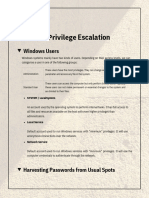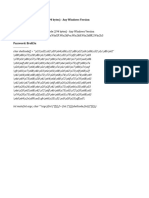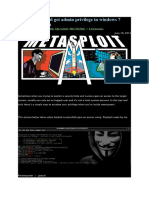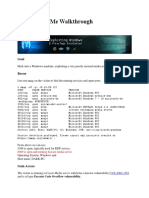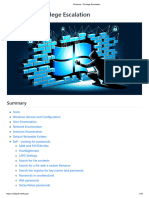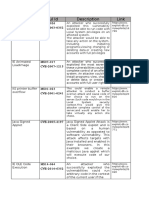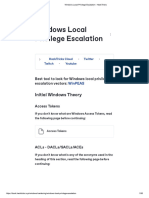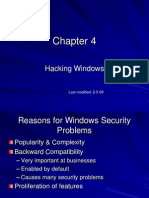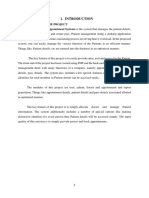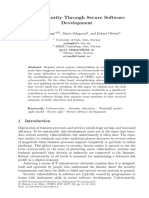0% found this document useful (0 votes)
42 views6 pagesCheatsheet Windows
The document provides a comprehensive guide on Windows privilege escalation techniques, including various exploits, tools, and commands. It covers methods such as using Meterpreter, Powershell, and Sysinternals tools like PsExec to gain elevated privileges on Windows systems. Additionally, it lists specific vulnerabilities and their corresponding CVEs across different Windows versions, emphasizing the importance of understanding these exploits for penetration testing and security assessments.
Uploaded by
sarthakchow2Copyright
© © All Rights Reserved
We take content rights seriously. If you suspect this is your content, claim it here.
Available Formats
Download as TXT, PDF, TXT or read online on Scribd
0% found this document useful (0 votes)
42 views6 pagesCheatsheet Windows
The document provides a comprehensive guide on Windows privilege escalation techniques, including various exploits, tools, and commands. It covers methods such as using Meterpreter, Powershell, and Sysinternals tools like PsExec to gain elevated privileges on Windows systems. Additionally, it lists specific vulnerabilities and their corresponding CVEs across different Windows versions, emphasizing the importance of understanding these exploits for penetration testing and security assessments.
Uploaded by
sarthakchow2Copyright
© © All Rights Reserved
We take content rights seriously. If you suspect this is your content, claim it here.
Available Formats
Download as TXT, PDF, TXT or read online on Scribd
/ 6









